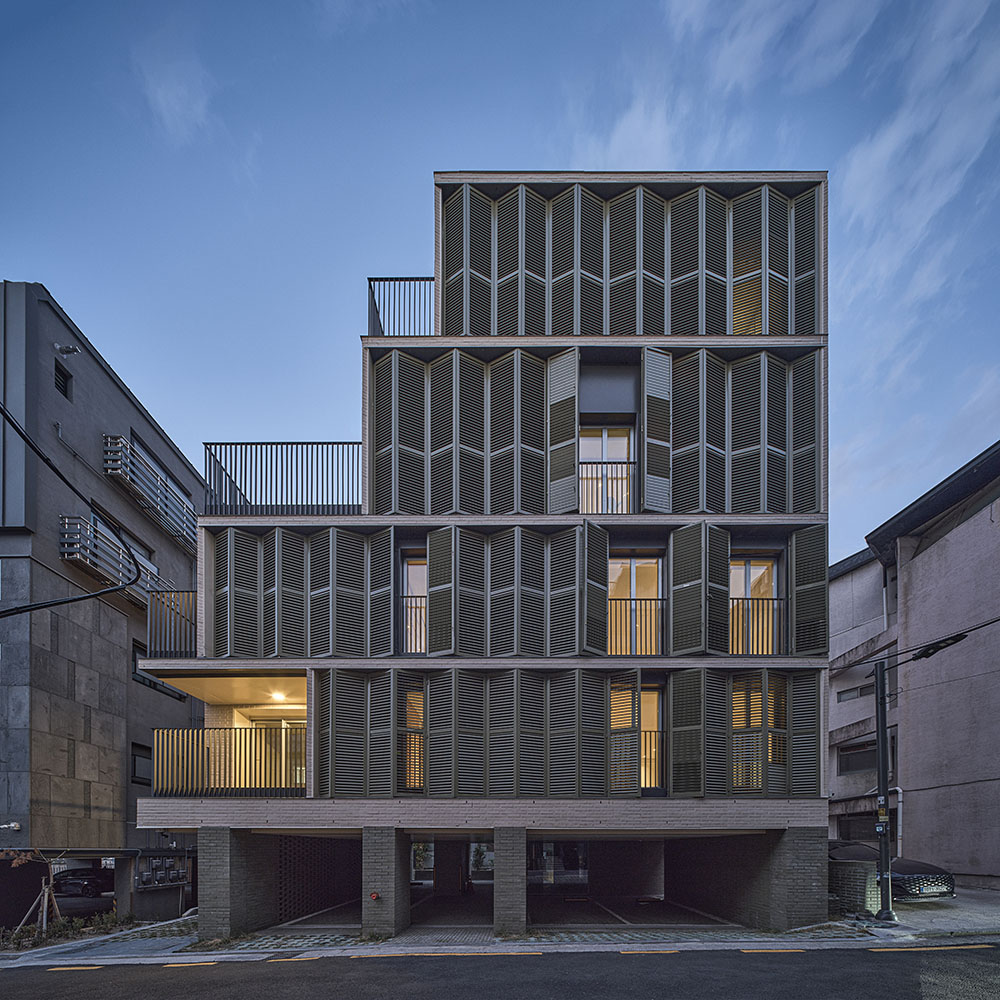
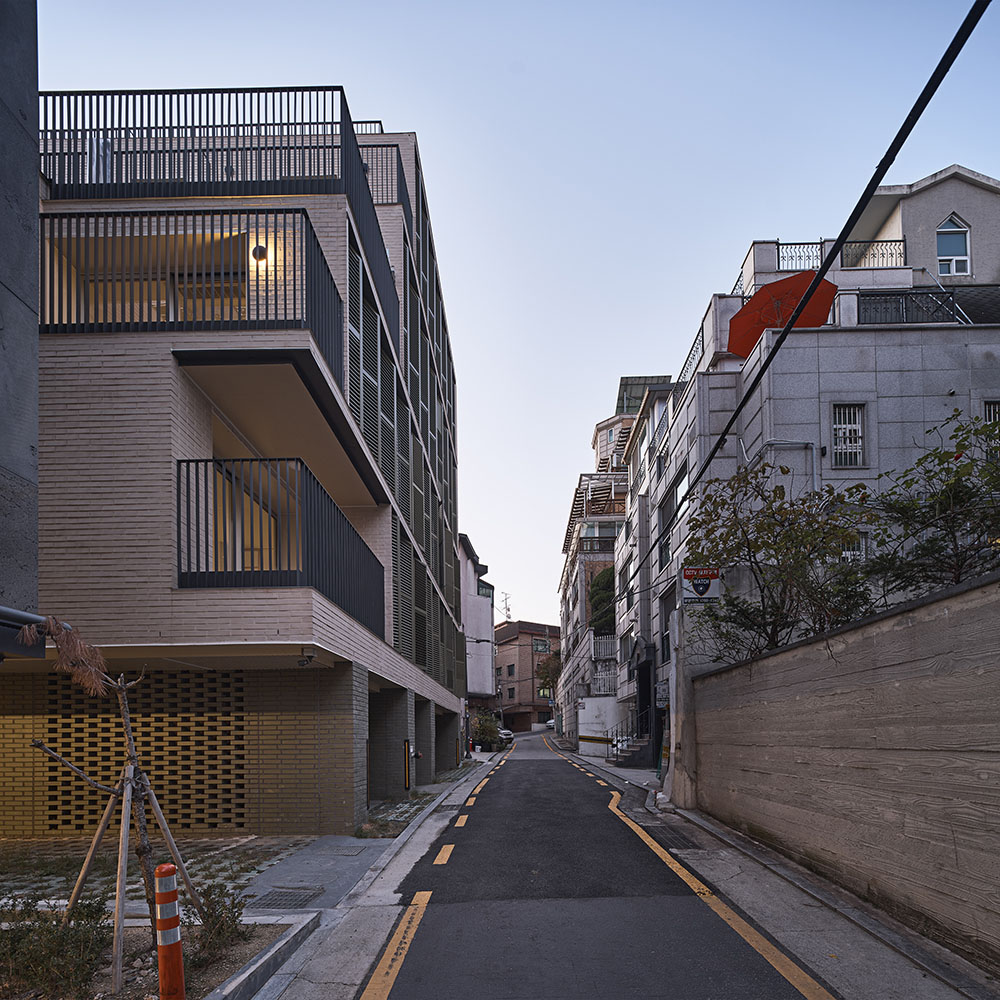
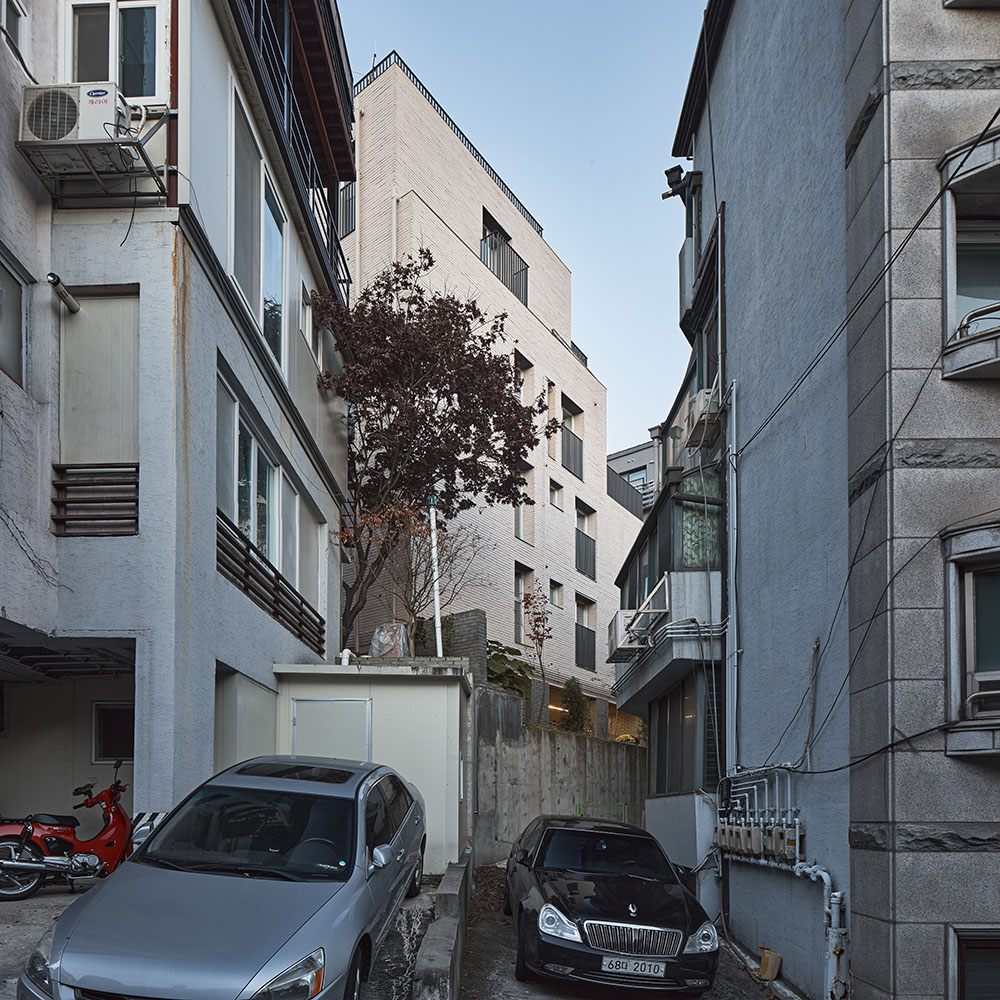
The multi-family residential building, commonly known as “villa”, is a well spread typology in the cities of South Korea. Despite the large quantities of these residential buildings, arguably is not the preferable option for living in the city. The legal preconditions to design these type of buildings gives little space for innovation or typological variation in consequence creating a continuous urban magma of impersonalized buildings with a constant solution to massing, materiality and programmatic organization.
For all these reasons, designing yet another multi-family residence in Yeoksam-dong was an opportunity to find small design solutions that could provide certain level of newness to the restricted building typology. Firstly, the massing of the building, obtained as a consequence of strict application of the shadow-related code, is manipulated in order to increase the complexity of the volume. Two balconies are inserted in the north-west corner of the building, at 2F and 3F. By inserting the balconies in perpendicular direction to each other, the overall mass of the building is enriched.
It is also taken in special consideration the design of the only one façade towards the city. This façade is designed with a prefabricated green colored aluminum shutter that acts as a second skin of the building. The undulated disposition of the shutters intent to provide depth to the façade in contrast to the flatness of the brick walls of the remaining facades. Shutters are useful to protect the direct penetration of the west sunlight inside the house during the summer months while preserving some natural light access during the morning and early afternoon.
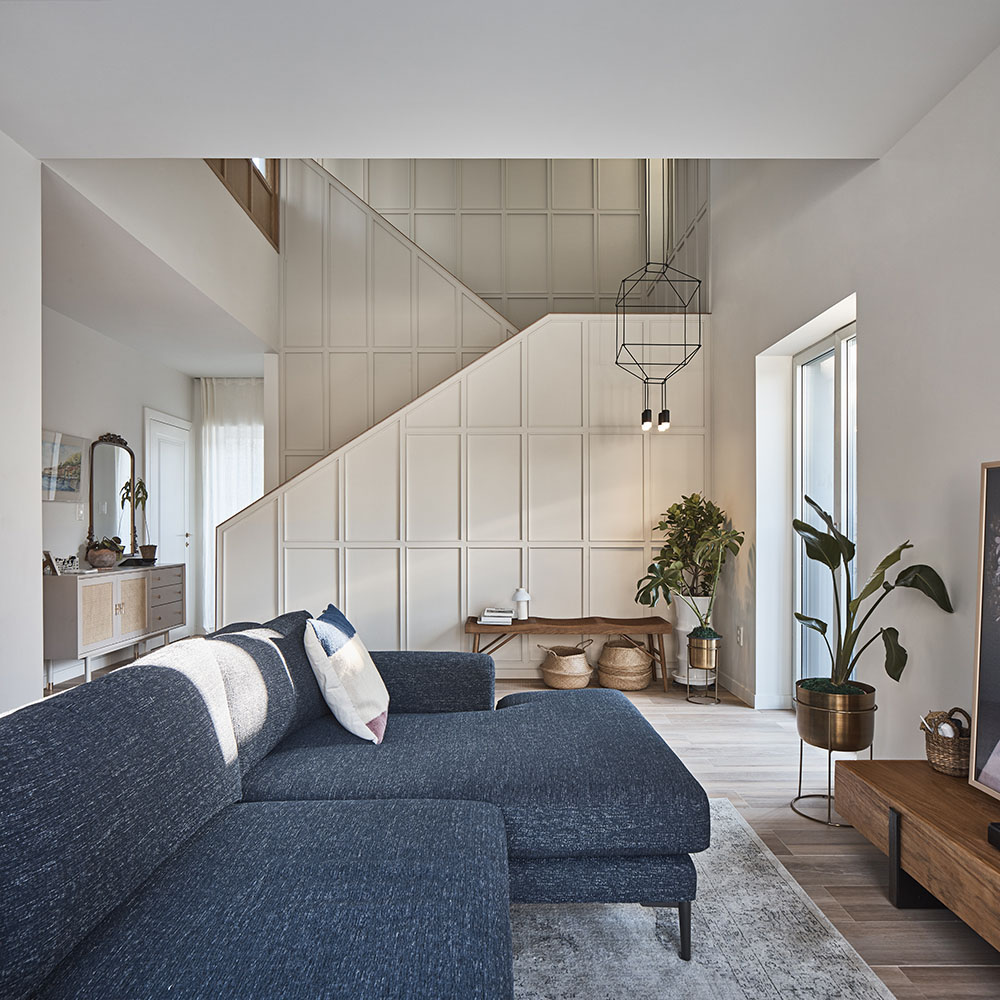
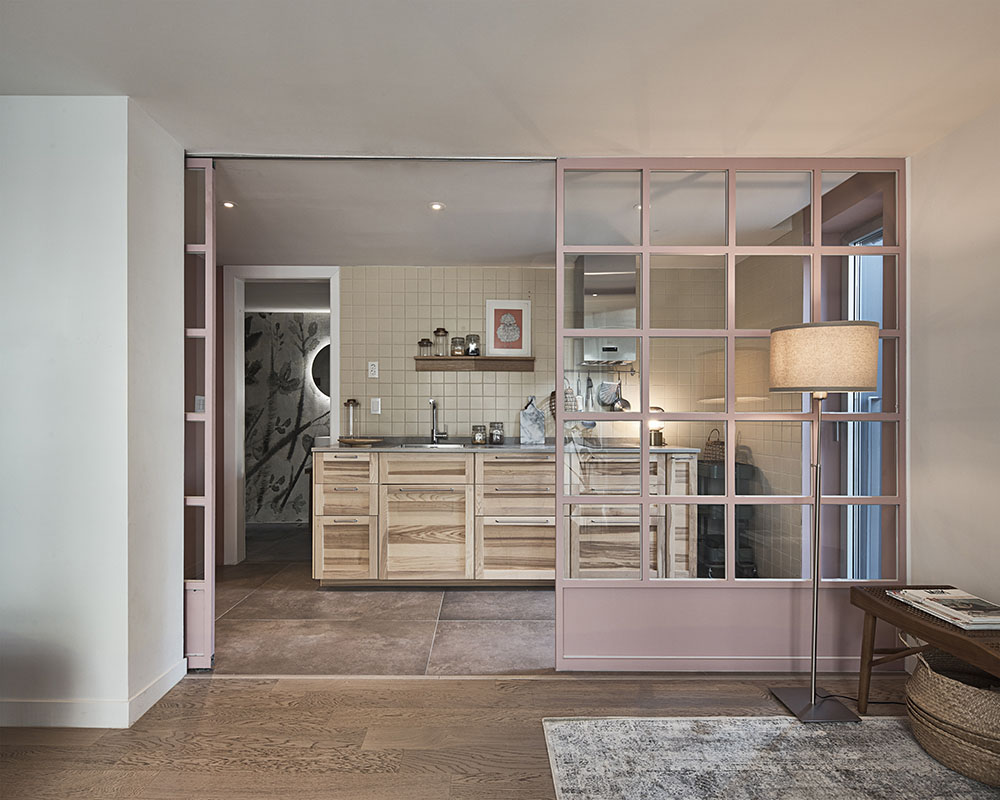
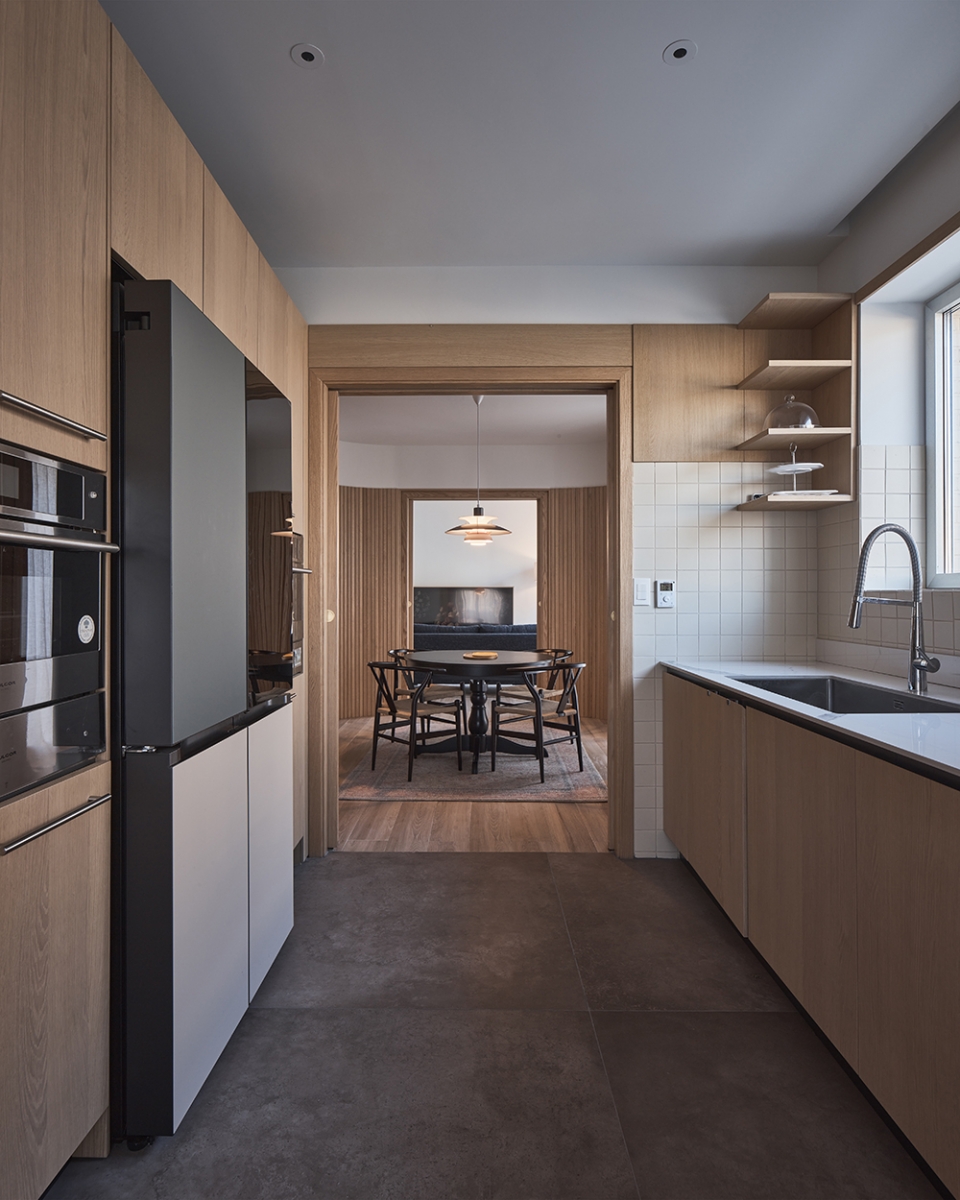
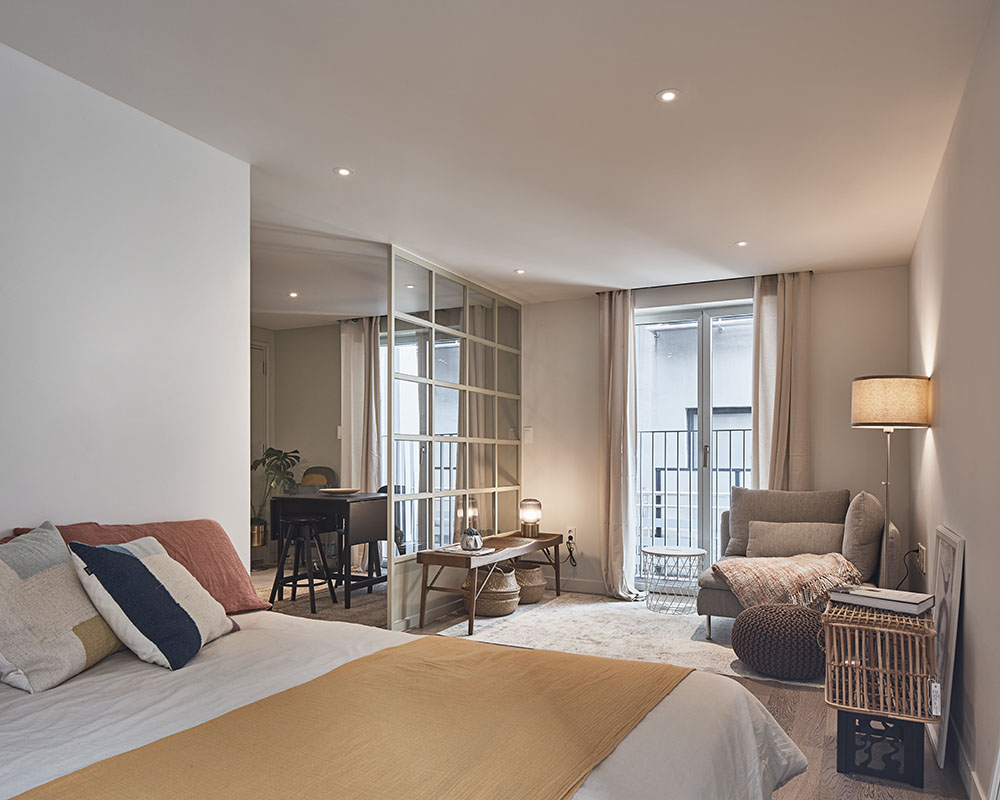
The building includes two types of houses: rental apartments of 30m2 on the 2F and 3F and a private residence in a duplex solution on the 4F and 5F. The rental apartments are designed with the intention to subdivide the space into two distinctive zones differentiating the kitchen area from the living/ sleeping one avoiding direct visual contact between the bed and the cooking. Ultimately, the purpose of the design is to create the sense of larger space.
The private house on the 4F and 5F is designed with a classic European principle of space organization. The kitchen, dining and living room are organized linearly along an axes creating long visual perspectives, again, to increase the perception of scale of space inside a relatively small house.
Cars are usually parked in the 1F of the Villa as a consequence of the building code. Because of this, the residence’s entrance usually become subordinated to the car. To create an appropriated space for pedestrian to access the building we propose for the 1F a central area free of cars marked by two columns. Through the pedestrian entrance is still through the parking, enough area has been secured for people to pass and find the front door of the building.
The Building to Land Ratio (BTL) and Floor Area Ration (FAR) mostly predetermines the extension of the building up to one meter to the site boundary. Consequently, three of the facades of the building are facing to another villa at a distance of only 2m-3m. The usual consequence to this is the denial of the openings towards the exterior in order to protect privacy -either by designing very small windows or by attaching visual protections on the exterior of them. It is the intend of the new Yeoksam residence to provide large number and size of openings in all of the residences prioritizing natural light to privacy. This last one can be protected by simply using net curtains.
Overall, the intention of this project was to challenge some of the conventions on residential typologies and giving a fresh approach to the Villa type.
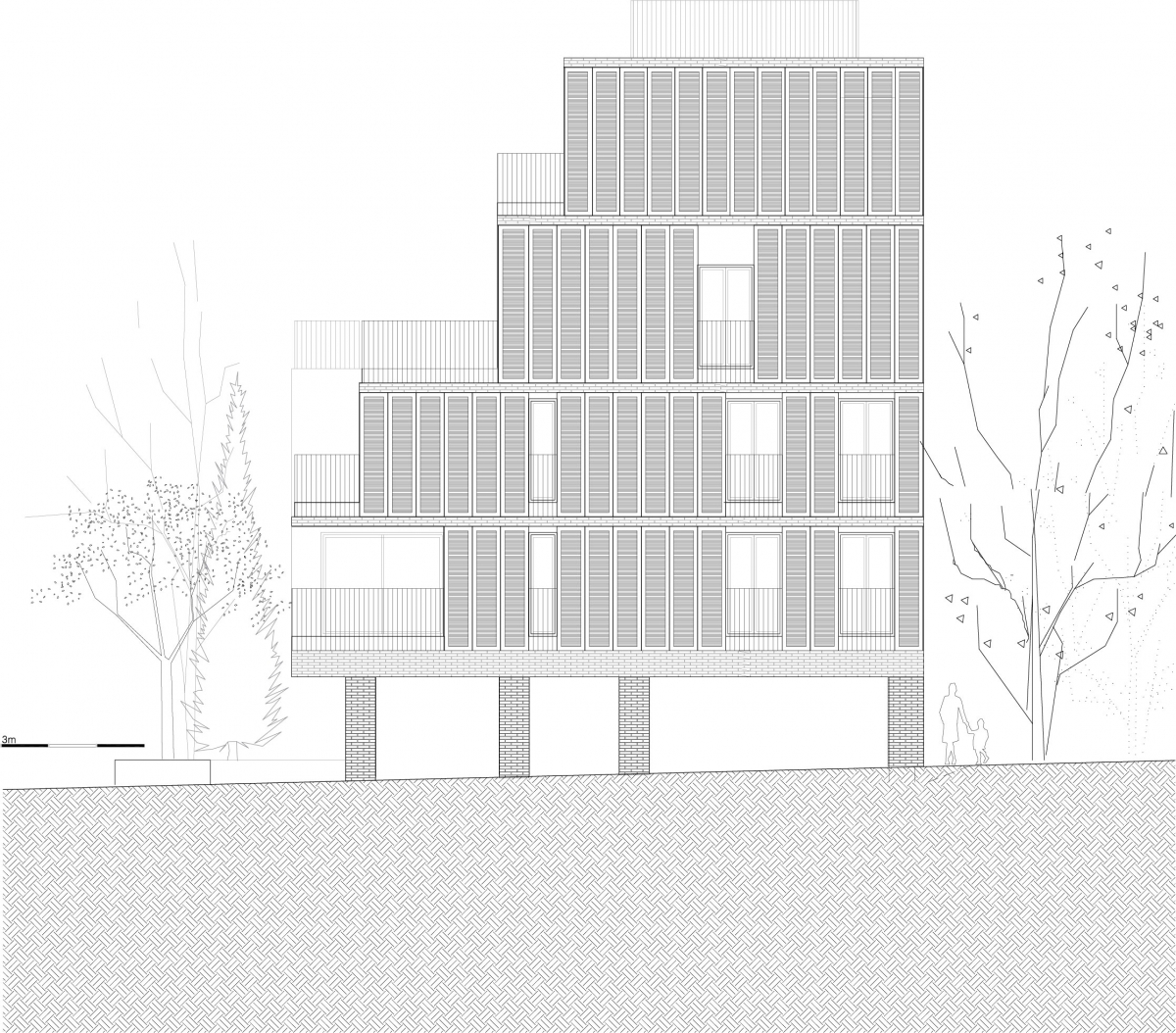
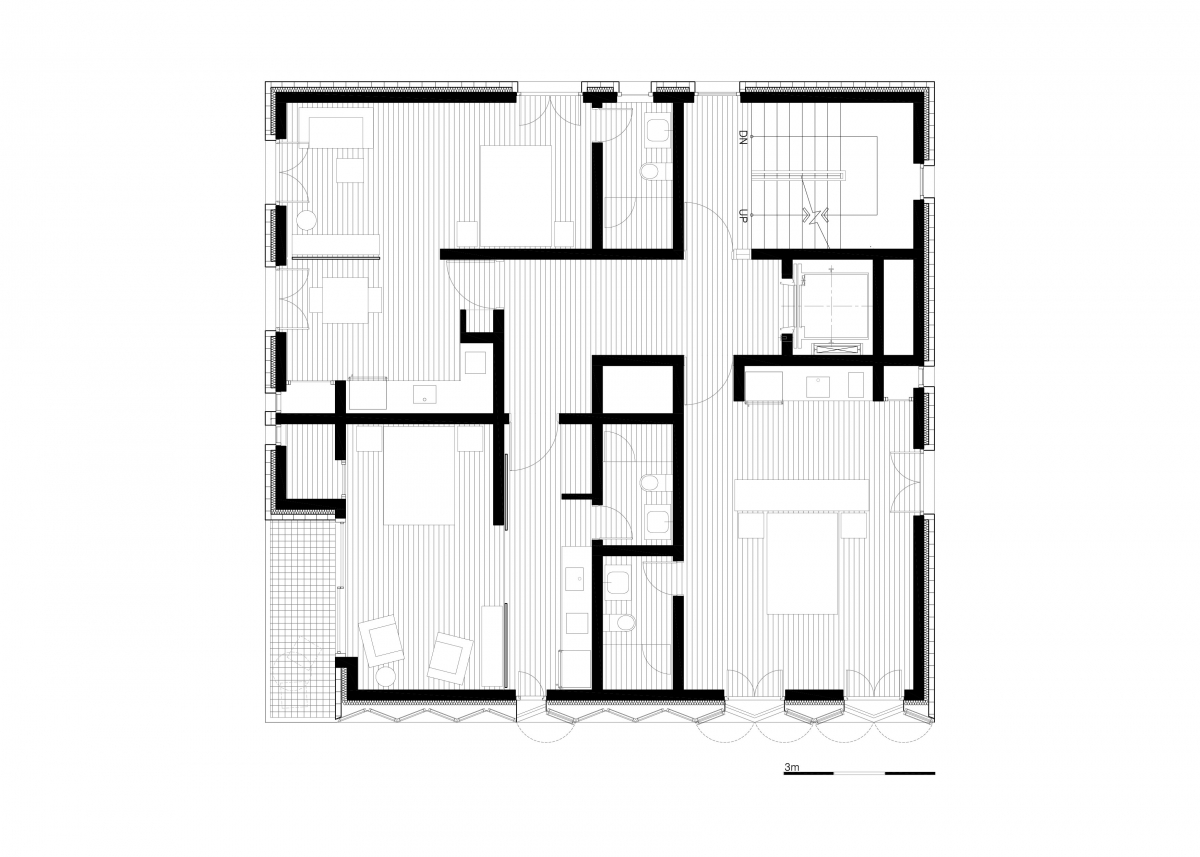
2,3F Plan
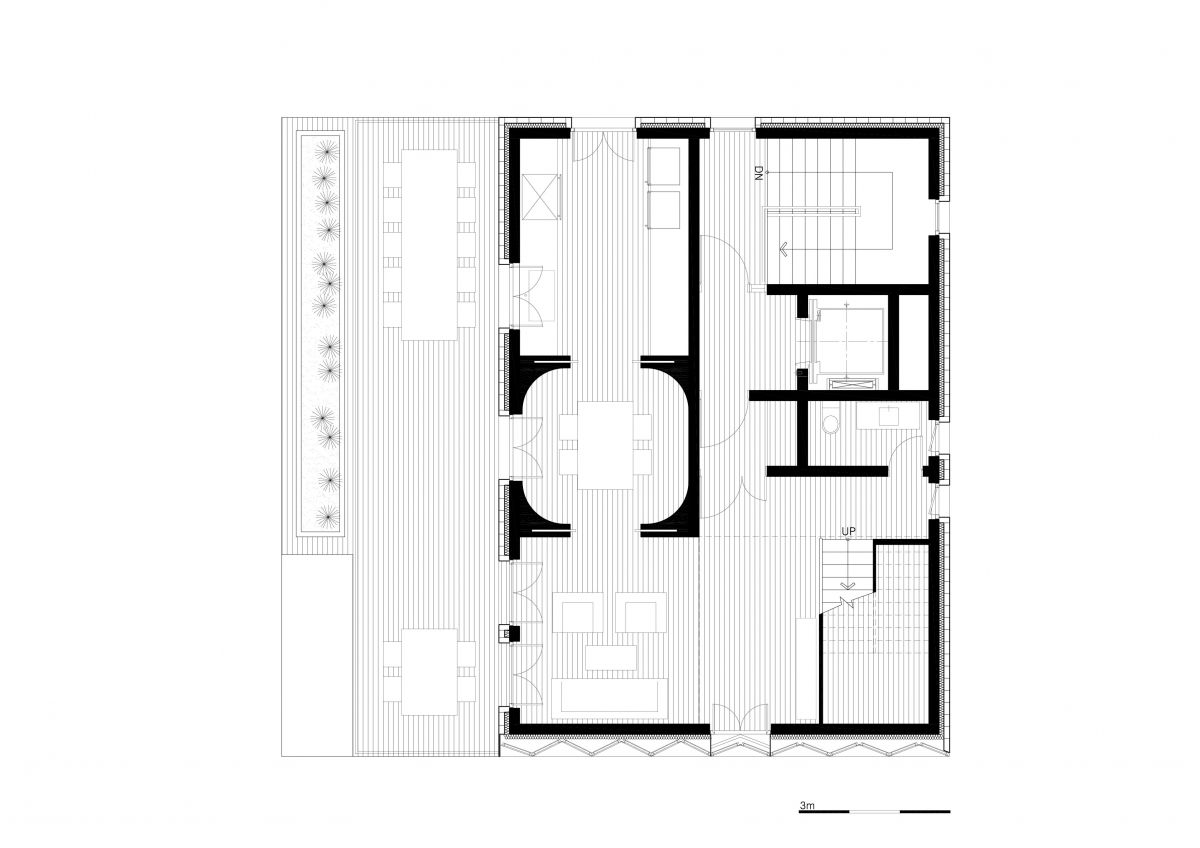
4F Plan
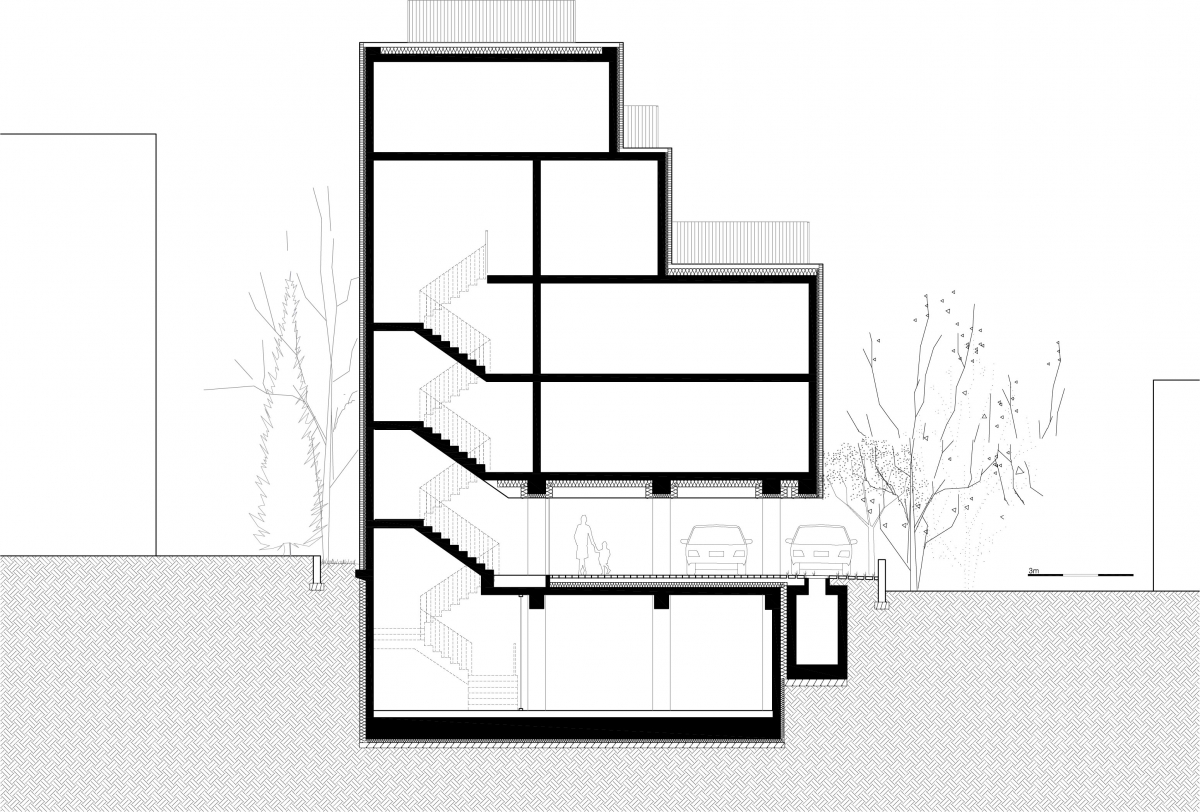
259㎡
148.8㎡
590.8㎡
B1, 5F
6
15m
57.28%
168.42%
RC
Clinker brick, Aluminum powder coated shutters
water-based paint, tile, plaster board, solid wood
Jinwon Engineering
Juseong ENG
Dongyang ENS
Intellpolis
June 2019 – Nov. 2020
Jan. 2020 – June 2021




